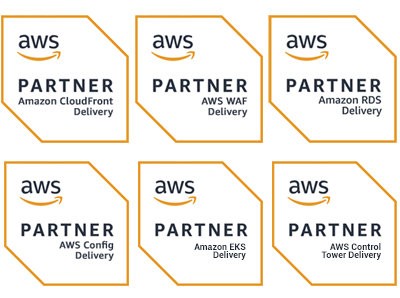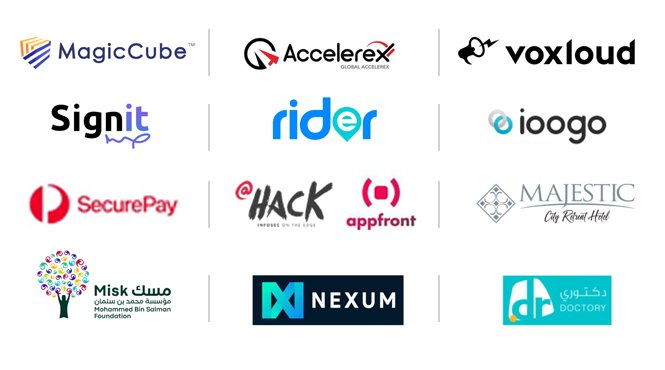Join us with a journey to the cloud
AWS The Leading Cloud Platform
As an AWS Advanced Tiers Partner in the Middle East, and a pioneer in achieving the AWS Managed Services Provider, our highly certified team of experts is ready to assist customers in their digital transformation journeys. Managed cloud services company who also specializes in cloud migration from on-prem or other clouds to AWS and DevOps consultancy.

Managed cloud services company who also specializes in cloud migration from on-prem or other clouds to AWS and DevOps consultancy
2
Partner Programs
6 +
AWS Service Validations
50 +
AWS Certifications
50 +
AWS Customer Launches
Amazon Web Service Consulting Partner in UAE
Our team has more than a hundred AWS-certified experts who have been managing Amazon Web Service environments for businesses of different scales.


Resilient Solutions: Business Continuity, Disaster Recovery, and Managed Services
SUDO as an AWS Partner is a leading provider of Managed Service Provider solutions with an unparalleled expertise in Business Continuity and Disaster Recovery. With a deep understanding of the challenges businesses face in today’s rapidly evolving digital landscape, SUDO leverages AWS’s robust cloud infrastructure and services to design and implement highly resilient and scalable solutions. Our team of certified professionals possesses extensive experience in designing, implementing, and managing BCDR strategies that ensure the uninterrupted operation of critical systems and data in the face of unforeseen events. SUDO’s proactive approach to MSP and BCDR enables businesses to mitigate risks, minimize downtime, and maximize operational efficiency, all while ensuring the highest level of security and compliance. Our track record of successful implementations and customer satisfaction underscores their commitment to delivering exceptional MSP and BCDR services that empower organizations to thrive in the face of any adversity.
Leveraging the power of AWS Resilience Architecture and Design, we offer comprehensive Business Continuity and Disaster Recovery (BCDR) solutions that ensure the utmost protection for your critical systems and data. Our expert team specializes in designing resilient architectures that leverage AWS’s highly available services, such as multi-region deployments, automated backups, and fault-tolerant infrastructure. With our tailored BCDR strategies, your business can mitigate the impact of any disruptive event, whether it’s a natural disaster or a cyber attack, by enabling rapid recovery and minimizing downtime. We prioritize continuous monitoring, regular testing, and proactive maintenance to ensure your systems are always prepared for any scenario. Trust us to architect robust BCDR solutions on AWS that provide the resilience and peace of mind your business deserves.
As a leading provider of AWS Managed Services, we bring unparalleled expertise in ensuring the seamless operation and management of your AWS environment. With our comprehensive AWS Managed Services offering, we handle all aspects of your infrastructure, from provisioning and monitoring to patching and security. Our certified Amazon Web Service experts closely collaborate with your team to understand your unique business requirements and design a tailored managed services solution. We leverage AWS’s industry-leading tools and services to optimize your environment’s performance, scalability, and security while adhering to best practices. By offloading the operational burden to our skilled team, you can focus on your core business activities while enjoying the peace of mind that comes with knowing your AWS environment is in the hands of experts. Experience enhanced efficiency, cost savings, and streamlined operations with our reliable and comprehensive AWS Managed Services.
AWS Service Delivery Proficiency
Through this partnership, businesses can work with a SUDO who is certified AWS partner to design and implement a customized solution that leverages the full power of AWS’ cloud platform. With the support of an experienced AWS partner, businesses can confidently and securely integrate AWS services into their website or web application, enabling them to take advantage of the scalability, reliability, and cost-effectiveness of the cloud. This partnership allows businesses to focus on their core competencies while relying on the expertise of an AWS partner to deliver the best possible solution for their unique needs.
Service that helps deliver content quickly and securely to users over the internet with lower latency, also includes features to help protect against common threats, such as distributed denial-of-service (DDoS) attacks and content scraping.
Service that makes it easy to set up, operate, and scale a relational database. RDS allows you to scale your database up or down, as needed, to match the changing demands of your application.
Service that helps organizations manage and distribute approved IT services. With Service Catalog, you can create and manage catalogs of approved IT services, such as applications, networks, and infrastructure, and make them available to users within your organization
Serverless computing service offered by AWS that lets organizations run code without having to manage infrastructure. It allows organizations to execute code in response to events, such as changes to data in an Amazon S3 bucket or an Amazon DynamoDB table.
Service that allows organizations to easily set up and manage a secure and compliant multi-account AWS environment. It automates the creation of landing zones, which are pre-configured environments for running scalable workloads in the cloud.
Service that enables organizations to use templates to create, manage, and delete AWS resources in a predictable and reliable manner. The templates specify the resources to be created, as well as their dependencies and any required input parameters
Service that helps protect your web applications or APIs against common web exploits. It provides a rule-based engine to identify and block unwanted traffic, and integrates with other AWS services for added protection.
Collection of tools and services that helps you manage and maintain your Amazon Web Services (AWS) resources by automating common tasks such as Backup & Patching
Managed Kubernetes (EKS) service that makes it easy to run and manage Kubernetes clusters in the cloud. With EKS, you can quickly deploy and scale your containerized applications, without the need to manage the underlying Kubernetes infrastructure
Fully managed NoSQL database service offered by Amazon Web Services. It provides fast and predictable performance with seamless scalability, allowing organizations to store and retrieve any amount of data, and serve any level of request traffic.
Service that enables organizations to assess, audit, and evaluate the configurations of their AWS resources. It provides a detailed view of the configuration of resources in the AWS environment, including their relationships and dependencies.
Managed service that makes it easy for organizations to create, publish, maintain, monitor, and secure APIs at any scale. It enables organizations to create APIs that access Amazon Web Service or other web services, as well as data stored in the AWS Cloud
Explore All Success Stories
Case Studies
Discover our collection of case studies and delve into the remarkable global success stories crafted by our team of cloud specialists in mission-critical environments. Gain valuable insights into how our experts have architected innovative solutions that have delivered exceptional results on a global scale.
Ready to have a conversation?
Achieve sustainable growth and stay ahead of your competition.
AWS PRACTICES

AMAZON RDS DELIVERY
Amazon Aurora Delivery
Amazon Aurora is a next-gen managed service provided by AWS, SUDO’s in-depth expertise of Amazon Aurora allows to deploy Amazon Aurora in a cost-effective way for all kind of workloads catering to startups, SMBs and Enterprises.

AWS WAF DELIVERY
Automated and Compliance Ready AWS WAF Implementation
AWS WAF is a Web Application Firewall with unlimited customizations and flexibility options, SUDO’s implementation of AWS WAF enables Automated Security with AWS WAF which allows customers to let their WAF take care of itself with very less or no operational overhead.

AWS CONFIG | AWS CONTROL TOWER DELIVERY
Governance and Compliance Professional Services
SUDO helps companies implement Governance and compliance in cloud to meet their compliance requirements in 40% less time than they would achieve those normally, made possible because of SUDO’s implementation practices and expertise brought to the table by the SUDO team.

AMAZON CLOUDFRONT DELIVERY
Secure and Compliant CDN Services
AWS Cloudfront is globally scalable CDN service and can be customized and scaled to serve customers from all around the world. SUDO implements Cloudfront with automated security configurations using AWS WAF And Lambda@Edge to enabled security at edge while staying compliant with different industry compliance requirements.
Our Clients & Testimonials

They have been quite friendly and supportive thought our entire experience so far. Specially a well experienced team with solid knowledge of the domain.
Sudo team was very customer-centric and willing to go the extra mile to ensure that the project was delivered on time. They took on more work where needed at no extra cost to Accelerex, and they were able to help mentor our team members. Sudo was an excellent choice for us and I would recommend them.
Highly skilled and professionals. Reliable in any situation. They know very well AWS solutions and know how to implement, findining out of the box solutions.
SUDO consultants are honest, communicative, and hard-working technicians, that have extensive hands-on AWS experience. Their work is impeccable, they are super fun to work with and they are very fairly priced.
The team is extremely talented. They actively listen and design first-class systems all while communicating in almost real-time to questions, concerns, or comments. On this specific project, we used them for they were provided the problem and took in our requirements, and offered a solution that not only was what we expected but better saved us resources run time, and costs. I highly recommend using SUDO for any AWS dev-ops or mirco-services projects.
I am very glad to have done this review with SUDO Consultants. From the very start, SUDO Consultants were very helpful and supportive. The team has a lot of experience with modern architectures and workflows. They have helped us modernize the application and improve our security practices.
Quick response to support request. Excellent knowledge of the product. Great communications and updates
Let Us Help You Grow
Build the Digital Enterprise of Tomorrow with Cloud Transformation

